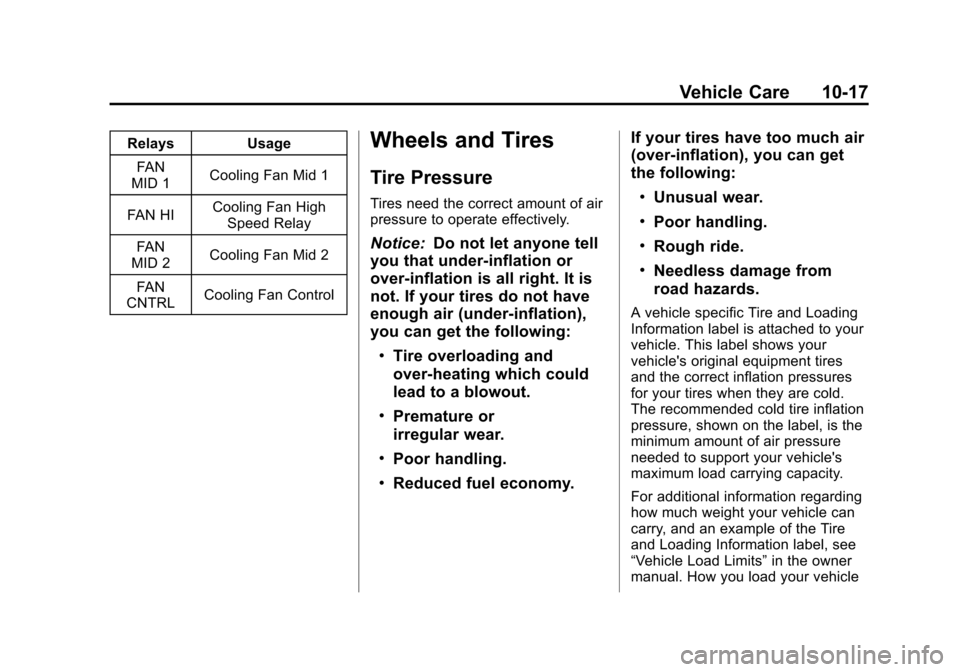load capacity CHEVROLET TAHOE 2011 3.G Owners Manual
[x] Cancel search | Manufacturer: CHEVROLET, Model Year: 2011, Model line: TAHOE, Model: CHEVROLET TAHOE 2011 3.GPages: 98, PDF Size: 1.55 MB
Page 20 of 98

Black plate (8,1)Chevrolet Tahoe and GMC Yukon/Yukon Denali Hybrid - 2011
5-8 Instruments and Controls
Engine Coolant
Temperature Gauge
United States
Canada
This gauge shows the engine
coolant temperature.
It also provides an indicator of how
hard the vehicle is working. During a
majority of the operation, the gauge
reads 100°C (210°F) or less. If a
load is being pulled or going up
hills, it is normal for the temperature
to fluctuate and go over the 113°C
(235°F) mark. However, if the gauge
reaches the 125°C (260°F) mark, it
indicates that the cooling system is
working beyond its capacity.
Charging System Light
This 12‐volt battery light comes on
briefly when the ignition is turned to
ON/RUN, but the engine is not
running, as a check to show it is
working.
It should go out once the engine
has been started. If it stays on,
or comes on while driving, there
could be a problem with the 12‐volt
charging system. Have the vehicle
serviced by your dealer. A 12‐volt
charging system Driver Information
Center (DIC) message may also
appear. See Driver Information
Center (DIC) on page 5‑11 for more
information. This light could indicate
that there are electrical problems.
Page 65 of 98

Black plate (17,1)Chevrolet Tahoe and GMC Yukon/Yukon Denali Hybrid - 2011
Vehicle Care 10-17
RelaysUsage
FAN
MID 1 Cooling Fan Mid 1
FAN HI Cooling Fan High
Speed Relay
FAN
MID 2 Cooling Fan Mid 2
FAN
CNTRL Cooling Fan ControlWheels and Tires
Tire Pressure
Tires need the correct amount of air
pressure to operate effectively.
Notice:
Do not let anyone tell
you that under‐inflation or
over‐inflation is all right. It is
not. If your tires do not have
enough air (under‐inflation),
you can get the following:
.Tire overloading and
over-heating which could
lead to a blowout.
.Premature or
irregular wear.
.Poor handling.
.Reduced fuel economy. If your tires have too much air
(over‐inflation), you can get
the following:
.Unusual wear.
.Poor handling.
.Rough ride.
.Needless damage from
road hazards.
A vehicle specific Tire and Loading
Information label is attached to your
vehicle. This label shows your
vehicle's original equipment tires
and the correct inflation pressures
for your tires when they are cold.
The recommended cold tire inflation
pressure, shown on the label, is the
minimum amount of air pressure
needed to support your vehicle's
maximum load carrying capacity.
For additional information regarding
how much weight your vehicle can
carry, and an example of the Tire
and Loading Information label, see
“Vehicle Load Limits”
in the owner
manual. How you load your vehicle